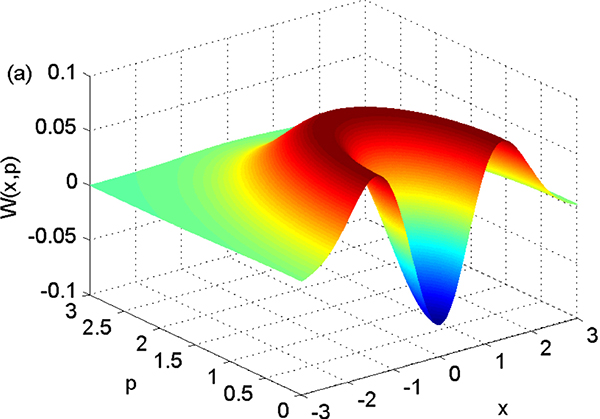EPJ D Highlight - A better starting point for exploring entanglement
- Details
- Published on 25 February 2020

Updated mathematical techniques which can distinguish between two types of ‘non-Gaussian curve’ could make it easier for researchers to study the nature of quantum entanglement.
Quantum entanglement is perhaps one of the most intriguing phenomena known to physics. It describes how the fates of multiple particles can become entwined, even when separated by vast distances. Importantly, the probability distributions needed to define the quantum states of these particles deviate from the bell-shaped, or ‘Gaussian’ curves which underly many natural processes. Non-Gaussian curves don’t apply to quantum systems alone, however. They can also be composed of mixtures of regular Gaussian curves, producing difficulties for physicists studying quantum entanglement. In new research published in EPJ D, Shao-Hua Xiang and colleagues at Huaihua University in China propose a solution to this problem. They suggest an updated set of equations which allows physicists to easily check whether or not a non-Gaussian state is genuinely quantum.
As physicists make more discoveries about the nature of quantum entanglement, they are rapidly making progress towards advanced applications in the fields of quantum communication and computation. The approach taken in this study could prove to speed up the pace of these advances. Xiang and colleagues acknowledge that while all previous efforts to distinguish between both types of non-Gaussian curve have had some success, their choices of Gaussian curves as a starting point have so far meant that no one approach has yet proven to be completely effective. Based on the argument that there can’t be any truly reliable Gaussian reference for any genuinely quantum non-Gaussian state, the researchers present a new theoretical framework.
In their approach, Xiang’s team encoded non-Gaussian characteristics into the mathematics of ‘Wigner’ distribution functions, which are related to the probability distributions of quantum particles. Their updated equations removed many of the complications typically involved with determining non-Gaussian curves from Gaussian reference points; greatly simplifying the calculations involved. If their techniques become widely accepted, they could enable researchers to more effectively study and exploit one of the most mysterious phenomena known to physics.
S-H Xiang, Y-J Zhao, C Xiang, W Wen, X-W Long (2020) A method for efficiently estimating non-Gaussianity of continuous-variable quantum states, European Physical Journal D 74:16, DOI: 10.1140/epjd/e2019-100421-6





